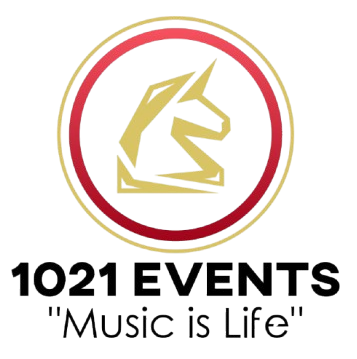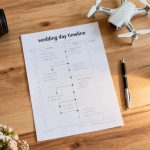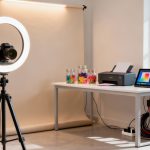Have you ever walked into a party where the dance floor just felt alive? That electric buzz in the air? It's no accident. The secret weapon is almost always the lighting for dance floor. It’s what transforms a room from just a space with music into a full-blown experience that practically begs people to get up and dance.
Why Lighting Is the Secret to an Unforgettable Dance Floor
Killer dance floor lighting does so much more than just let people see where they're going—it paints the room with energy and emotion. I like to think of it as the party's invisible DJ, setting the mood and shifting the vibe from a chill dinner to a hands-in-the-air celebration. Without it, even the best music and the most stunning venue can feel a little… empty. The right lights create a gravitational pull, making the dance floor the absolute center of the universe for the night.
This guide is your backstage pass to how the pros use light to completely remake a space. We're going to pull back the curtain on the essential tools of the trade and show you how to layer light to build the perfect atmosphere. Forget thinking of lighting as just a utility. By the time we're done, you'll see it as your most powerful tool for creating a party nobody will forget.
From Function to Feeling
At its core, event lighting is all about changing how people perceive a space. A generic ballroom can instantly become a pulsating nightclub, a dreamy, romantic wonderland, or a slick, branded corporate hub—all through the smart use of color, movement, and texture. We achieve this by layering different types of lights, each with a very specific job to do.
The right lighting design doesn't just light up a room; it takes your guests on an emotional journey, making the experience stick with them long after the music stops.
This idea is so powerful that it’s fueling massive growth in event tech. For example, the market for portable dance floors, which are often packed with cool LED features, was worth a whopping USD 306.8 million in 2023. And it’s not slowing down, with projections hitting nearly USD 697.7 million by 2033.
Crafting the Complete Experience
Great lighting doesn't exist in a vacuum; it’s a crucial piece of a much larger puzzle. It has to work hand-in-hand with the music, the decor, and the overall flow of the event to create a world that feels totally cohesive and immersive. When the lights pulse and change with the music's beat and mood, the whole sensory experience becomes incredibly intense, encouraging even the most hesitant guests to jump in.
To really create something special, you need to think about how lighting fits into the bigger picture of mastering event and experiential marketing. Even simple touches, like uplighting, can fundamentally change how a room feels. Don’t believe me? Check out our guide on the incredible impact of uplighting with before-and-after photos to see the transformation for yourself.
Getting to Know Your Lighting Toolkit
Creating killer dance floor lighting isn't about just throwing a few random lights in a room. Think of it like a master painter's studio. You wouldn't expect a masterpiece with just one color and one brush, right? A lighting pro has a whole palette of fixtures, each one a specialized tool meant to create a specific vibe and add to the bigger picture.
Let's crack open that toolkit and look at the core fixtures we use to turn a boring floor into the magnetic center of the party. Once you get what each light does, you'll see how we layer them to build a dynamic and totally unforgettable atmosphere for your event.
The Foundation: Uplights
Uplights are the architectural workhorses of any event. If you were painting a room, these are your primer and base coat. We place these fixtures on the floor and aim them straight up walls, columns, or other interesting features, washing them in rich, solid color.
Their main job is to define the space and set the mood from the get-go. By bathing the room's perimeter in your event's colors—maybe a warm, romantic amber for a wedding or a sharp, cool blue for a corporate party—uplights create an immersive world that sets the emotional tone before the DJ even hits play. They’re the canvas for everything else to come.
This infographic breaks down how different lighting elements work together, targeting both the energy and the emotion in the room.
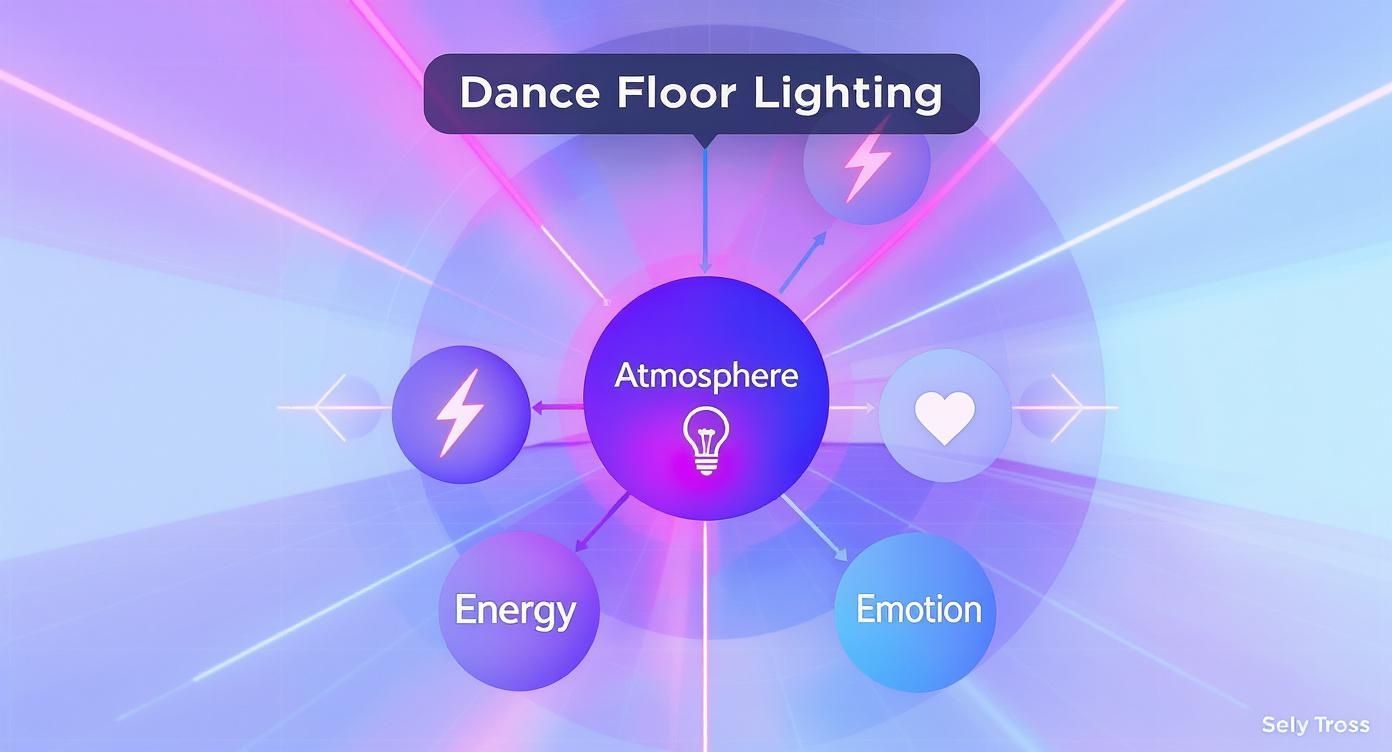
As you can see, a great atmosphere is a mix of specific effects. Some lights are there to pump up the crowd, while others are all about creating a specific feeling.
The Headliners: Moving Heads
If uplights are the canvas, then moving heads are the rock stars of the show. These are the intelligent, dynamic lights you see at concerts, the ones that sweep beams across the crowd, snap to different colors, and project patterns that dance right along with the music. They are the energy engine of any dance floor.
What makes them so powerful is their sheer versatility. A single moving head can:
- Spotlight key moments: Think of a tight, clean beam on the happy couple during their first dance.
- Create sweeping energy: We can wash the whole dance floor in colors that move and pulse with the beat.
- Project cool patterns: Using built-in stencils called "gobos," we can cast shapes and textures across the walls, ceiling, and floor.
That movement is the key. It adds a layer of excitement that a static light just can't touch. When the beat drops and a dozen beams of light flash to a new position in perfect sync, it creates a rush of energy that pulls everyone onto the dance floor. If you're curious about the tech behind it, you can dive into the Working Principles Of LEDs to see how these fixtures produce such intense color.
The Finishing Touches: Gobos and Haze
With the foundation set and the headliners ready, it's time for the details that make the whole design feel special. This is where we bring in personalization and atmospheric effects to make the experience truly one-of-a-kind.
A gobo projector is basically a high-tech slide projector for light. We use a custom-made stencil (the gobo) to project anything you want—a wedding monogram, a company logo, or an elegant pattern—right onto the dance floor or a main wall. It's the ultimate way to make the space feel like it’s yours and yours alone.
Finally, let's talk about the secret ingredient that really makes all this lighting look incredible: haze. A small hazer machine releases a super-fine, odorless, water-based mist into the air.
The magic of haze is that it catches the light, making every single beam visible as it cuts through the air. Without it, you just see a dot of light on the wall. With haze, you see the entire beautiful beam, creating that epic, concert-level visual.
Your Dance Floor Lighting Cheat Sheet
Feeling a little overwhelmed? No worries. Here’s a quick-glance table to help you keep these essential lighting tools straight. It's a simple breakdown of what's what and when to use it.
| Fixture Type | Primary Function | Best Used For | Mood It Creates |
|---|---|---|---|
| Uplights | Washing walls with static color | Establishing the room's base color and defining the event space. | Immersive, elegant, foundational. |
| Moving Heads | Creating dynamic movement, color, and patterns | Energizing the dance floor, spotlighting key moments, and building excitement. | High-energy, exciting, concert-like. |
| Gobos | Projecting custom images or patterns | Personalizing the space with monograms, logos, or decorative textures. | Custom, branded, sophisticated. |
| Haze | Making light beams visible in the air | Enhancing the impact of all other lighting, especially moving heads. | Dramatic, atmospheric, professional. |
By combining these different fixtures—the foundational uplights, the energetic moving heads, and the personalized gobos all amplified by haze—you get a rich, multi-layered visual experience. This intentional approach to lighting for a dance floor ensures the room isn't just lit up, it's truly alive. To see these fixtures in action, check out how we use our professional LED uplights for events to completely transform venues.
How to Craft the Perfect Party Atmosphere
Great dance floor lighting is so much more than just making sure people can see. It's pure storytelling. It has the power to guide the emotional flow of the entire evening, shifting the mood from one moment to the next without a single word being spoken. Think of it as a visual script for your party, setting the scene for everything from the heartfelt toasts to the wild dance-offs.
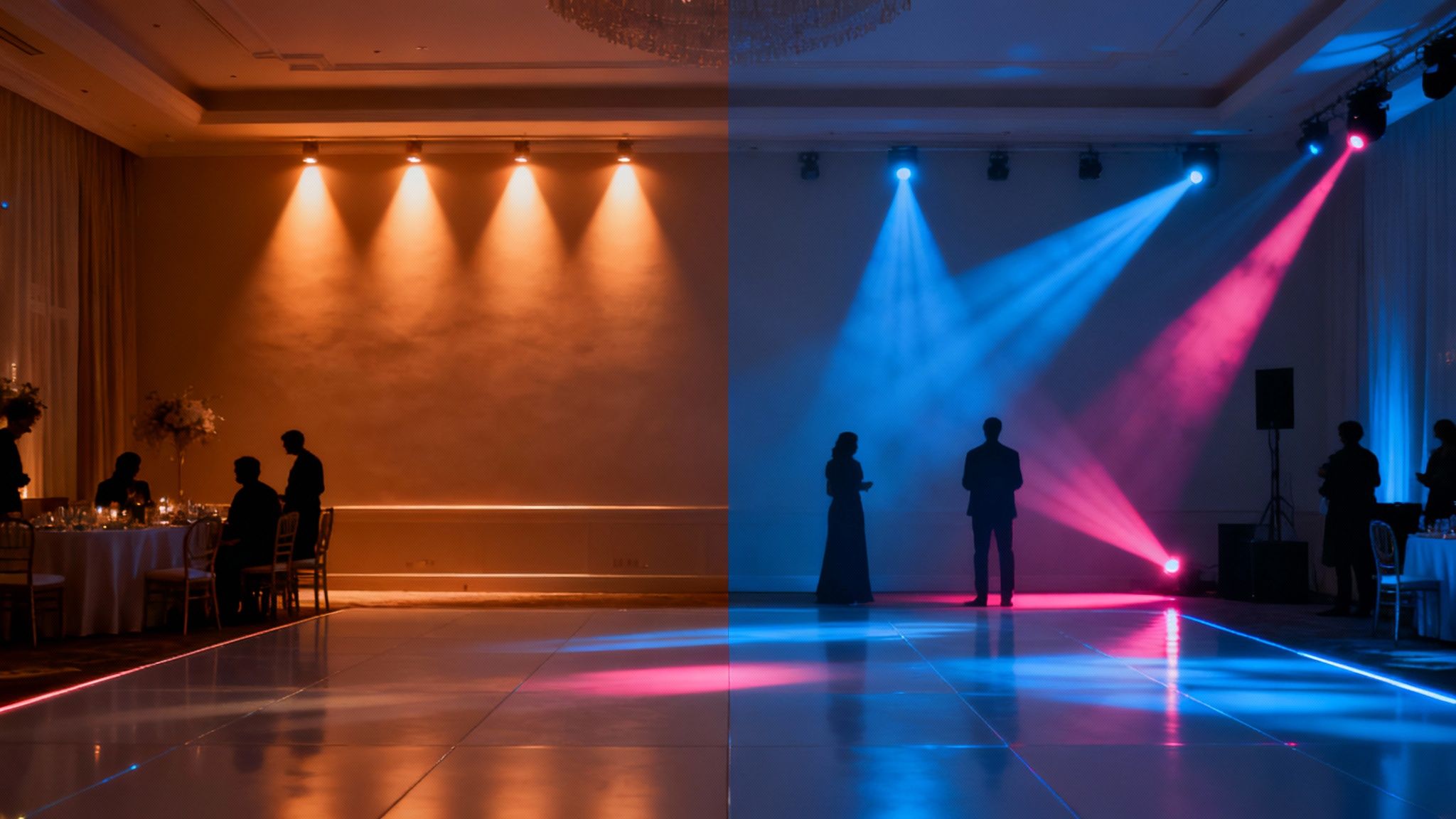
This is where we get into the psychology of light and color. The right choices can make a room feel warm and intimate one minute, then flip it into a high-energy nightclub the next. It’s all about creating a visual journey that lines up perfectly with the vibe you want, minute by minute.
Setting the Mood for Intimate Moments
Think about the emotional high points of any event—the first dance at a wedding, a touching speech, or a big awards presentation. These moments need lighting that pulls people in, creating a sense of closeness and warmth. This is where static, warm-toned lighting absolutely shines.
We lean on colors like soft amber, warm white, and gentle gold to wash the room in a welcoming glow. These hues are naturally comforting and romantic, helping to slow down the energy and put the focus right where it belongs.
- Static Uplighting: By keeping the lights still and bathing the walls in a consistent, warm color, we craft a sophisticated and elegant backdrop that's perfect for dinner and conversation.
- Spotlighting: A single, soft beam of light can highlight the couple during their first dance or the speaker at the podium, making them the undeniable center of attention.
This approach builds a beautiful, intimate atmosphere. The goal isn't to create a huge spectacle, but to support the emotional weight of the moment, making it feel even more special. For more inspiration on setting these crucial scenes, check out our dedicated guide to stunning wedding lighting ideas.
Flipping the Switch to Party Mode
Once the formalities are done, it’s time to get people moving. This is our cue to execute a dramatic shift in the lighting, signaling to everyone that the energy is about to change in a big way. That transition from a warm, static environment to a dynamic, colorful party is what truly ignites the night.
This is when we bring in movement, cool colors, and exciting effects to build momentum and get people out of their seats.
The secret to a packed dance floor is creating a multi-sensory experience where the lights and music work as a team. When the beat drops and the lights explode with color and motion, it’s an irresistible call to get out there.
We make this happen by firing up fixtures like moving heads and switching the color palette to cooler, more energetic tones like blues, purples, and magentas. We'll also layer in effects like strobes and fast-moving beams that pulse with the music, creating a visual rhythm that gives guests permission to let loose. The demand for these kinds of immersive experiences has been huge; in fact, the global market for interactive LED dance floors was valued at USD 450 million in 2024. It just goes to show how much people want to be part of an engaging, dynamic party.
The Art of the Transition
A professional lighting designer doesn’t just flick a switch. They curate a seamless transition that builds anticipation and feels completely natural. The change might be gradual, with colors slowly cooling and movement subtly increasing as the DJ builds up the music. Or, it can be a sudden, dramatic hit that lands with perfect timing on the first high-energy track.
For example, at a wedding, just as the cake is being cleared, we might slowly fade the warm amber uplights into a vibrant purple. Then, as the DJ announces the dance floor is officially open, moving heads snap to life, sweeping energetic patterns across the room. This kind of choreographed shift is what makes the whole experience feel polished and intentional, turning a great event into an unforgettable party.
Strategic Light Placement for Maximum Impact
So, you’ve got a pile of awesome lights. Now what? Honestly, having the right gear is only half the battle. The real magic—the secret sauce that turns a "nice" setup into a "wow" experience—is knowing exactly where to put everything. This is where we get into the practical side of things, moving from the what to the how.

It’s all about creating layers and angles. Think of it like painting a picture. If you only have lights on the floor, the scene can feel a bit flat. But if everything is just coming from overhead, you get weird shadows and dark spots. A truly killer lighting design mixes different heights and positions to build a rich, three-dimensional environment that pulls your guests right into the moment.
Taking It to the Next Level with Trussing
If you want that pro, concert-style vibe, you’ve got to get your lights up in the air. That’s where trussing comes in. You’ve seen it before: it’s that sturdy metal framework that lets us hang fixtures safely and precisely over the dance floor or stage. It’s the skeleton that holds a dynamic lighting design together.
Getting lights overhead allows us to shoot beams and patterns down onto the floor, covering everyone without blinding them. This is absolutely essential for moving heads and wash lights. It gives them the breathing room they need to create those huge, sweeping effects and vibrant color washes. Without a truss, those powerful lights are stuck on the ground, and their impact is seriously limited.
We have a couple of go-to truss setups:
- Goal-Post Truss: This is a classic. A horizontal truss runs over the DJ booth, held up by two vertical stands on each side. It perfectly frames the DJ and focuses all that lighting energy right where you want it: the dance floor.
- Vertical Totems: For a more modern and sleek look, we often use vertical truss pillars, or "totems." We'll place two or more on either side of the dance floor and pop a moving head on top. It's a clean, sophisticated look that still provides incredible coverage.
Best Practices for Lights on the Ground
While the overhead lights bring the high-energy action, the fixtures on the floor set the foundational mood. This is where uplighting really shines, placed strategically around the room to add depth and splashes of color. But for these, placement is everything—not just for looks, but for safety too.
Proper placement isn't just about making things look good; it's about creating a safe and seamless experience where guests can let loose without worrying about tripping over cables or equipment.
We tuck uplights into low-traffic spots—flush against walls, behind columns, or next to the head table—so they highlight the room's features without getting in anyone's way. Every single cable is taped down securely and run along walls, far from where people will be walking. It’s this meticulous attention to detail that keeps the focus on the beautiful atmosphere, not the gear making it happen. To see how this plays out in a real event, check out our guide on uplighting for a wedding reception, where we break down how safety and style work together.
Tying It All Together
The end goal is to make all these different pieces—the trussing, the movers, the uplights—feel like one cohesive system. A professional lighting plan always starts by looking at the venue's unique layout, the event’s schedule, and the emotional arc of the night. We literally map out where every single fixture will go to guarantee balanced, complete coverage.
This means the warm, static glow from the uplights perfectly complements the wild energy of the moving heads over the dance floor. The custom gobo has a prime, unobstructed spot to shine, and every single light is telling the same story. This thoughtful approach ensures your lighting for the dance floor is more than just a random collection of cool effects; it’s a fully designed experience that feels intentional and looks absolutely spectacular.
Controlling the Show Behind the Scenes
So, how do all these incredible uplights, moving heads, and custom gobos work together? They don't just turn on and do their thing. Someone has to be the conductor of this light orchestra, and that’s where the real magic happens. Let's pull back the curtain on how a pro lighting tech runs the show.
The secret is a communication protocol called DMX (Digital Multiplex). Think of it as the nervous system for all professional lighting. We run a special cable from a control board to the first light, then "daisy-chain" from that light to the next, and so on.
This simple chain gives a lighting designer god-like control over every single fixture. From a laptop or a dedicated console, they can tell a specific moving head exactly where to point, what color to shine, and when to strobe—all perfectly synched to the music.
The Brains of the Operation
The DMX controller is the command center for the entire light show. These can range from simple software on a laptop to the kind of massive consoles you see at a U2 concert. For most private events, a powerful software-based controller gives us all the flexibility we need.
This "brain" is what lets us create dynamic, evolving atmospheres throughout the night. A skilled operator will program different "scenes" or "looks" ahead of time, ready to deploy at a moment's notice.
- Dinner Scene: A warm, static wash of soft amber light from the uplights. Simple, elegant, and non-distracting.
- First Dance Scene: A romantic, soft spotlight on the couple, maybe with a slow-rotating custom gobo pattern on the floor.
- Party Scene: All systems go! Fast-moving beams, strobing colors, and effects that are programmed to pulse right along with the beat of the music.
This isn't just about turning lights on and off; it's about crafting a full-blown production. The technology behind it is a serious business. The professional stage lighting market was valued at USD 2,240.91 million in 2024 and is projected to hit USD 4,117.14 million by 2032. If you're curious, you can read more about the stage lighting market growth and see just how fast this tech is moving.
The Power of DJ and Lighting Synergy
Having a great DJ is crucial. Having a great lighting designer is, too. But when they work together, in sync? That’s when you get pure dance-floor magic. This collaboration is probably one of the most underrated parts of creating an absolutely epic party.
When the lighting operator and DJ are on the same wavelength, they can build incredible moments of tension and release. Think about a perfectly timed blackout right before a massive beat drop, followed by an explosion of light and color. That creates a physical, visceral reaction that people remember.
It's a two-way street. The DJ might give the lighting tech a nod that they’re about to switch genres, cuing a shift from a warm, disco color palette to cool, electric blues for an EDM set. Or the lighting tech might create a slow, sweeping spotlight effect to match a chill moment in the music.
This kind of teamwork turns a good party into a truly unforgettable sensory experience. It ensures the lighting for the dance floor isn't just a background element, but a living, breathing part of the night's energy.
Bringing Your Vision to Life with 1021 Events
Reading about lighting is one thing, but seeing it all come together is where the real magic happens. This is where we stop talking about gear and start talking about feelings, showing you how a professional touch can turn a nice room into an unforgettable experience. At 1021 Events, we build everything around your vision and use our expertise to bring it to life.
It always starts with a simple conversation. We won't just ask what colors you like; we want to know the vibe you're going for. A timeless, romantic wedding? A slick, high-energy corporate party? A wild birthday bash? Your answer gives us our creative North Star.
Our Collaborative Design Process
Once we have a solid grasp of the mood you're after, our designers get to work. We sketch out a custom lighting plan that layers all the different fixtures we've talked about to build the perfect atmosphere. This isn't about grabbing a pre-set package off the shelf; it's about designing a solution for your venue, your style, and your crowd.
We map out everything, from where each uplight will go for that perfect color wash to how the moving heads will sweep across the dance floor when the beat drops. This level of detail up front means a smooth, flawless setup on event day, so you can just show up and enjoy the party.
Great event lighting isn't just about the hardware. It’s about the art and skill of turning a feeling into a visual experience, making sure every single beam of light helps tell your story.
That dedication to a custom-fit plan is what really separates a professional production. We mix our technical know-how with a genuine understanding of how an event should flow to create an atmosphere that feels both spectacular and completely natural.
Real-World Examples of Our Work
Seeing is believing, right? Let's look at how all this theory actually plays out at real events.
-
For an Elegant Wedding: Imagine warm, amber uplighting around the room, creating an intimate, romantic glow during dinner. For the first dance, a single, soft spotlight finds the couple while a custom gobo slowly projects their initials onto the center of the dance floor.
-
For a High-Energy Corporate Party: Here, it’s all about creating a buzz. We could wash the walls in the company’s brand colors for a polished, cohesive feel. But when the DJ kicks things off, an overhead truss rig explodes with fast-moving beams, strobes, and vibrant colors perfectly synced to the music.
These are just a couple of ways a well-thought-out lighting design can completely change a space. Whether it's adding a touch of class or blowing the roof off the place, the right lighting makes all the difference.
To get a better idea of how we can transform your venue, check out our complete event lighting rental services and let's start dreaming up your perfect event.
Got Questions About Dance Floor Lighting? We've Got Answers.
When you're planning an event, the details can start piling up. Lighting, in particular, often brings up a lot of questions. We get it. To make things easier, we've pulled together answers to the most common things clients ask us.
Think of this as the practical, no-fluff guide to getting your event lighting right. We'll talk honestly about costs, explain why haze is such a game-changer, and break down how we get those lights to dance perfectly in sync with the music.
So, How Much Does Professional Dance Floor Lighting Actually Cost?
This is always the big question, and the real answer is: it all comes down to what you're imagining. The price tag for lighting can swing pretty dramatically depending on the size of your event, your venue's layout, and the complexity of the look you're going for.
For a smaller, more intimate gathering, a simple but elegant package with some uplighting and a cool dance floor effect might start in the low hundreds. But if you’re planning a full-blown production—we’re talking overhead trusses, a fleet of moving heads, custom gobos, and a lighting tech running the show live—the investment can easily be anywhere from $1,000 to over $5,000.
What really drives the price? It's a mix of how many fixtures you need, what kind of fixtures they are, the labor involved in setting it all up safely, and whether you have a pro on-site making the magic happen all night.
Every party is different, which is why we always build a custom quote. That way, you get a setup that fits your space and your vision perfectly, with no fluff or wasted budget.
Do I Really Need to Add Haze?
Okay, so you don't technically need it, but if you want to take your lighting from "nice" to "unforgettable," haze is your secret weapon. Haze is just a super-fine, odorless mist that hangs in the air, and its job is to catch the light.
Without it, you just see little dots of light on the floor and walls. Add a little haze, and suddenly you can see the entire beam of light cutting through the room. It’s what creates that incredible, concert-level energy. If you're spending money on awesome effects like moving heads, haze is what makes them truly pop. Just be sure to clear it with your venue first, as some have rules about atmospheric effects.
Can the Lights Actually Sync Up with the Music?
One hundred percent! This is where a good lighting design really shines. There are a couple of ways this works. The most basic way is a "sound-active" mode built into the light itself; a tiny microphone listens for the beat and triggers changes on its own. It's a simple solution that works.
But for a truly professional, polished show, we use DMX control. A lighting designer pre-programs different looks and can even run the lights live, reacting to the DJ's set in real time. This is how you get those perfect, intentional moments—like a dramatic blackout right before the beat drops. It’s the difference between random flashing lights and a truly immersive experience.
Ready to design a dance floor that your guests will be talking about for years? At 1021 Events, we live for this stuff. Let’s chat about how we can build a custom lighting experience that makes your party unforgettable. Start planning your event with us today!
